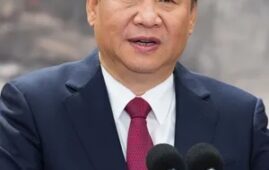



“We will continue to support the innovation-driven development of small- and medium-sized enterprises (SMEs), by deepening the reform of the New Third Board (National Equities Exchange and Quotations) and setting up a Beijing Stock Exchange as the primary platform serving innovation-oriented SMEs,” said Chinese President Xi Jinping at the Global Trade in Services Summit of the 2021 China International Fair for Trade in Services (CIFTIS) on Sept. 2.
According to the website of China’s National Enterprise Credit Information Publicity System, the new stock exchange in Beijing, structured as a limited company, was registered on the next day.
Since its launch in 2013, the New Third Board has grown into an important platform serving SMEs. In 2016, it classified companies into innovation layer and basic layer, and then added a selected layer last year, gradually forming basic systems with differentiated measures for issuance and trading suiting companies at different layers.
After over one year of evolution, the selected layer has been basically able to function as an open market for SMEs, attracted a number of high-quality SMEs and performed well.
According to credible source, the new stock exchange in Beijing was converted from the selected layer, as part of the country’s efforts to deepen the reform of the New Third Board.
It was built in strict compliance with the securities law, with relevant tasks being implemented step by step in a gradual and progressive manner and basic systems of the selected layer of the New Third Board continuing to function in the Beijing bourse.
The new stock exchange makes sure that companies seeking an IPO at the bourse will come from the innovation layer of the New Third Board and that a hierarchical market structure is maintained between the innovation layer and basic layer of the New Third Board and the new stock exchange. Meanwhile, it is also piloting the registration-based IPO system.
By building the new stock exchange upon the selected layer of the New Third Board, China Securities Regulatory Commission (CSRC) aims to improve the country’s multi-level capital market system with Chinese characteristics.
Based on the experience from creatively exploring the New Third Board, the CSRC plans to further raise the legal status and enhance the role of the selected layer in the capital market and solve institutional bottlenecks hindering its development to establish a stock exchange tailored for innovation-oriented SMEs and seek a path of inclusive finance where the New Third Board can be given better play in supporting and serving the scientific and technological innovation of SMEs.
Aimed at meeting the financing needs of innovation-oriented SMEs, the new stock exchange in Beijing has made differentiated institutional arrangement fitting the characteristics of SMEs, and is expected to show different features in the amount of funds raised, trading volume, and valuation level compared with stock exchanges in Shanghai and Shenzhen.
The new Beijing bourse is run by the National Equities Exchange and Quotations Corporation Limited. Through overall planning, coordination, and institutional interconnection, the new stock exchange and the innovation layer and basic layer of the New Third Board are able to maintain a balanced market structure.
The new bourse accommodates innovation-oriented SMEs that have expanded at the innovation layer and basic layer of the New Third Board, and mainly provides them with more efficient open market services for financing transactions.
By guiding and supporting the development of the innovation layer and basic layer, it is expected to stimulate the overall market vitality of the New Third Board, enhance its appeal to SMEs in their infancy, and eventually help create a sound market environment featuring high enthusiasm for innovation and entrepreneurship, active participation of qualified investors, and positive mentality of listed companies.
The new stock exchange has established stock offering, listing, information disclosure systems that suit innovation-oriented SMEs. In particular, it has kept flexible trading systems of the selected layer of the New Third Board and adopts a continuous auction trading mechanism.
In addition, in an effort to increase market flexibility, the Beijing bourse doesn’t impose a limit on the price change of stocks on their first day of trading, and restricts daily trading movements to 30 percent after that.


Cooperation between China and Nigeria had.



Nigerian government has urged trainees of.



Minister of State for Foreign Affairs,.


The Nigerian Government has congratulated the.


The Humanitarian Service Diamond Awards has.
A Chinese Company, Inner Galaxy Steel.


The Programme Coordinator, Regulatory, Compliance and.


A Non-Governmental Organization (NGO), Committee for.
The Trustfund Pensions Limited has chided.


The House of Representatives Committee on.
Leave a Comment